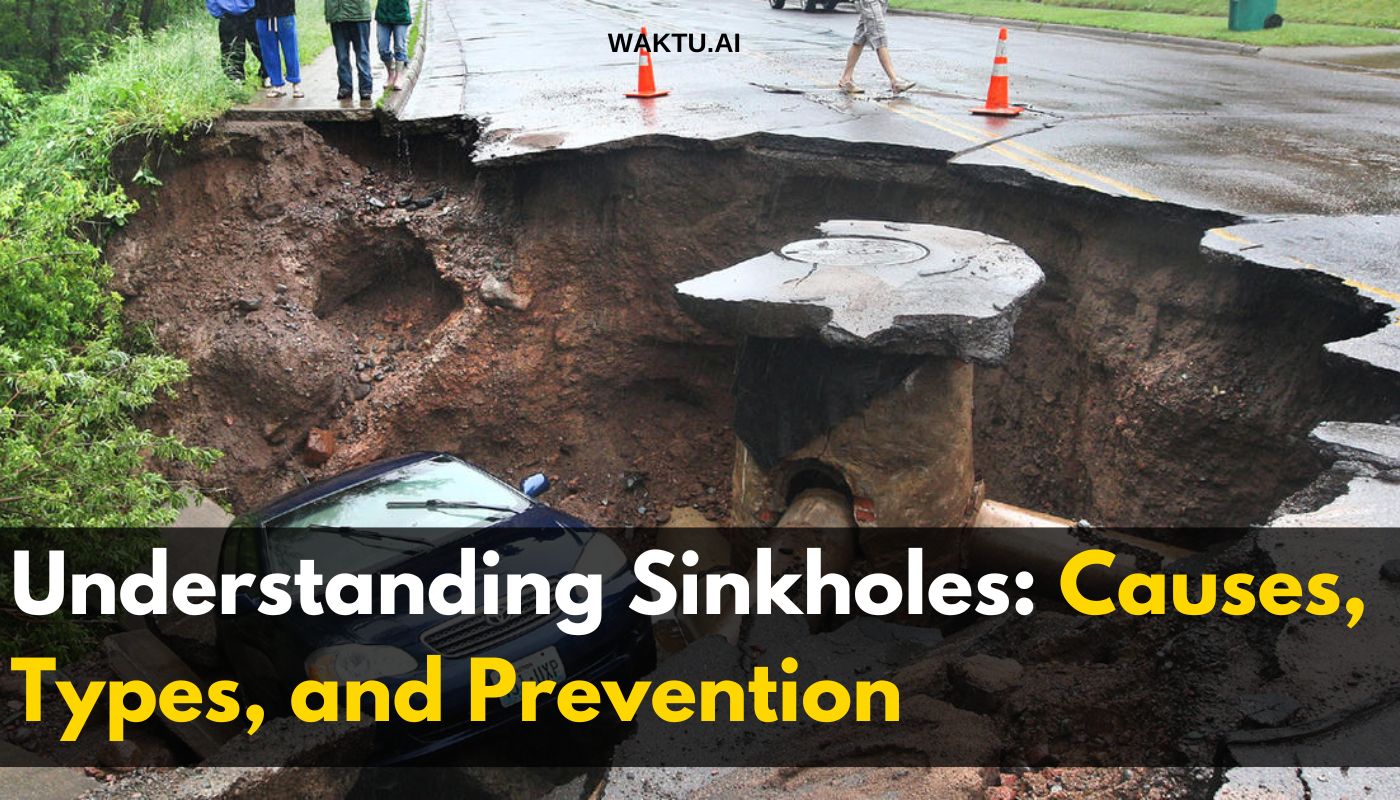What are sinkholes and how can they affect your area? Follow this comprehensive guide on the types, causes, and prevention measures of sinkholes.
What is a Sinkhole?

A sinkhole is a depression or hole in the ground caused by the collapse of a surface layer. Sinkholes can vary in size from minor depressions to massive chasms. They are often a result of natural processes but can also be induced by human activity.
Types of Sinkholes
- Dissolution Sinkholes: These form where water dissolves the soluble bedrock (such as limestone, gypsum, or salt), creating a bowl-shaped depression. Over time, the constant flow of water removes the supporting material, leading to a sinkhole.
- Cover-collapse Sinkholes: These occur suddenly due to the collapse of an underground cavern or void. They are typically seen in areas where the cover material (soil or sediment) is thicker and more prone to collapsing into the void.
- Cover-subsidence Sinkholes: These develop gradually where sandy, loose material covers the bedrock. The cover material slowly infiltrates into the underlying voids, creating a depression at the surface.
Causes of Sinkholes
Natural Causes:
- Erosion: The gradual removal of surface material by water or wind.
- Chemical Weathering: Dissolution of bedrock by acidic rainwater or groundwater.
- Subsurface Drainage Patterns: Natural movement of water below ground leading to the transportation of soluble rock.
Human-Induced Causes:
- Groundwater Pumping: Excessive withdrawal of groundwater can lead to the lowering of the water table and the collapse of soil into emptied spaces.
- Construction and Mining: Activities that alter the natural state of the ground, such as drilling, digging, and blasting, can contribute to sinkhole formation.
- Land Development: Changing the natural water drainage patterns through urban development can lead to sinkholes.
Identifying Sinkholes

Detecting potential sinkholes before they occur can be difficult. However, certain signs might indicate a forming sinkhole:
- Cracks in the walls of buildings.
- Depressions or soft spots in the ground.
- Tilting or leaning structures.
- Sudden drops in water levels in wells or natural water bodies.
Notable Sinkhole Incidents
- Guatemala City Sinkhole (2010): A massive sinkhole measuring approximately 60 feet (18 meters) wide and 30 stories deep opened up and swallowed a three-story factory.
- Florida Sinkhole (2013): Known as the Seffner sinkhole, it tragically killed a man when it swallowed his home.
Prevention and Mitigation
While completely preventing sinkholes can be difficult, certain measures can mitigate their impact:
- Regulating water extraction and diversions.
- Building on stable ground with thorough geological surveys.
- Monitoring areas prone to sinkholes and early warning systems.
- Proper land management practices to maintain natural water drainage systems.
Conclusion
Sinkholes are a fascinating yet potentially devastating natural phenomenon. Understanding their causes and signs can help in taking preventative measures and minimizing their impact on human life and property.